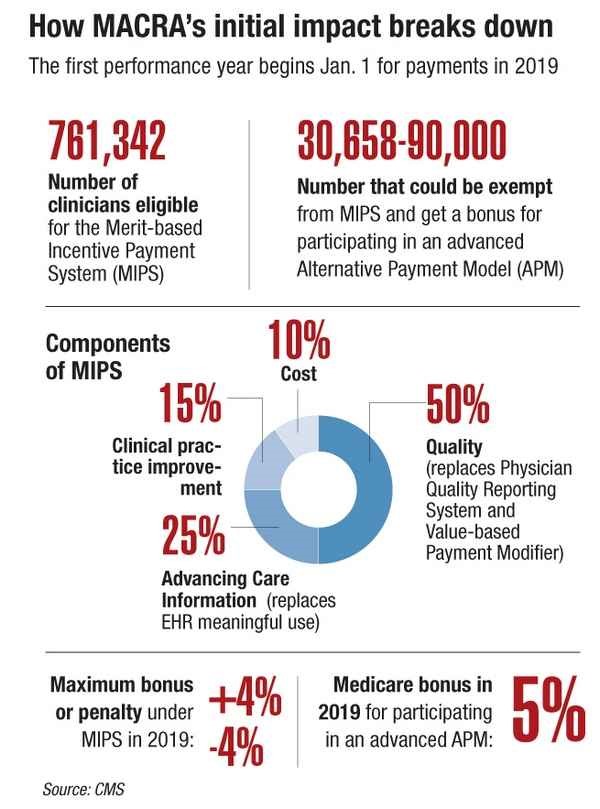BLOG: Dissecting the Medicare Access and CHIP Reauthorization Act
Out on the lecture circuit last week, I mentioned MACRA and was met with a sea of blank stares. The Medicare Access and CHIP Reauthorization Act of 2015, which provides for the most sweeping change to affect how we deliver and are paid for health care, became law in 2015. However, there is surprisingly little knowledge or understanding of the law or its implications by the provider community. The first performance period begins on Jan. 1, 2017. for payments in 2019.
MACRA provides for two tracks of payment for physicians under the new “quality payment program.” Remember that optometrists are classified as physicians under Medicare programs. The first is the Merit-based Incentive Payment System (MIPS), and the second is the Alternative Payment Models (APMs).
The MIPS program combines the three current Medicare quality programs into one. The programs that are being replaced are: The Physician Quality Reporting System (PQRS), the Value-Based Modifier Program and the meaningful use program for electronic health records (EHR). With the new program, providers will receive a composite score relative to their performance in each of four categories. Quality measures will be selected annually. The performance categories are:
--Quality: 50% of total score in year 1
--Advancing care information: 25% of total score in year 1
--Clinical practice improvement activities: 15% of total score in year 1
--Cost or resource use: 10% of total score in year 1 community
The projections from CMS predict that approximately 90% of the physician community will default to this payment system. The system favors larger group practices and places the solo practitioner at highest risk. The risk factor to payment is slated for a maximum 4% bonus or a 4% penalty depending on performance, as noted above, but will move up to 9% in subsequent years.
The APM track is the more desirable program, but the CMS eligibility standards are much higher. The only practical way for a physician to access this track is through an accountable care organization (ACO). For optometrists, it is critical that the relationship with an ACO be not just a vision plan or contract to do routine eye examinations. The contract must entail medical care to the scope of state license, and the care must include primary medical care.
The medical care that is provided within this track is also different than the traditional care provided today. There must be more collaboration and communication in a HIPAA-compliant electronic format. The proposed criteria for this care are organized into three categories: criteria that promote payment incentives for higher-value care, criteria that address care delivery improvements that promote better care and criteria that address improvements to the availability of information to guide decision-making.
The only practical way for optometrists to meet this criteria is with full integration with ophthalmology for eye disease and full integration with primary care medicine for chronic systemic disease.
There has been much discussion about integrated ophthalmic networks over the past 20 years. Prototype programs have even managed risk contracts. Today’s opportunity with EHR and Internet-based communication will raise this to a new level. MACRA provides the incentive and direction to make these networks practical and valuable.
This blog series has suggested and discussed many of the concepts and strategies that will be needed to prepare for the changes of health care reform. With the draft regulations now published this spring by CMS for the implementation of MACRA, the actual mechanisms and time frames have now been formalized. The time for optometrists to get organized for action is now here.

Source:CMS
